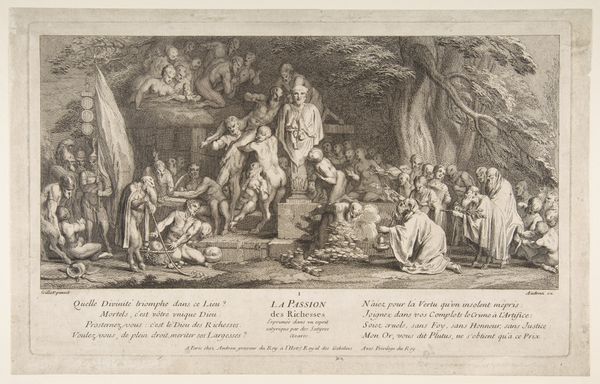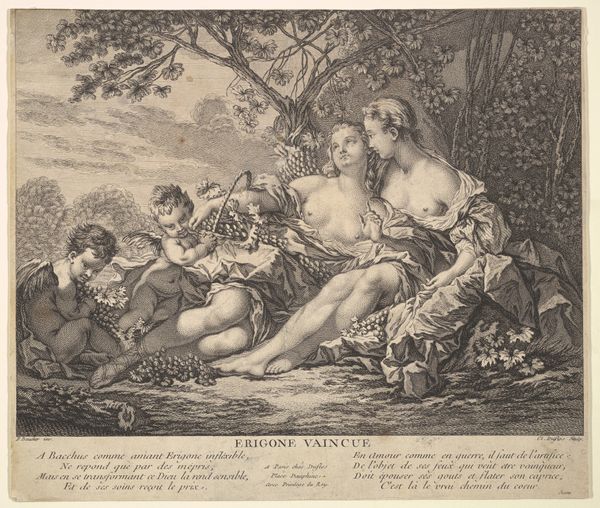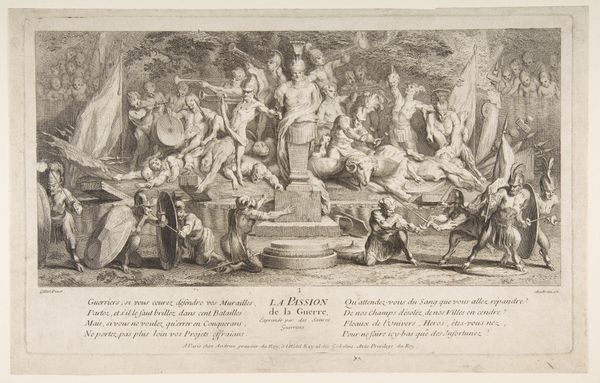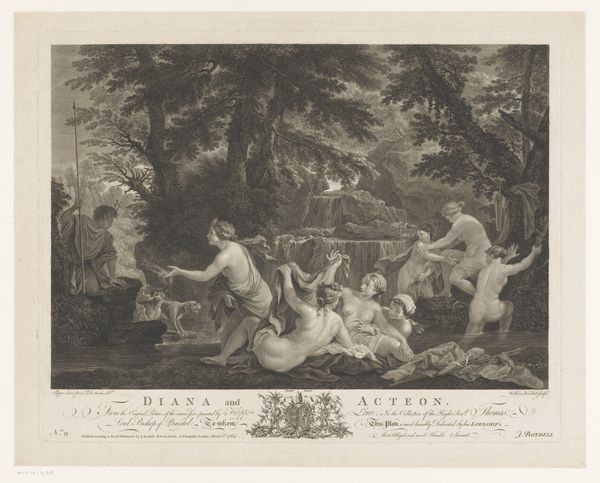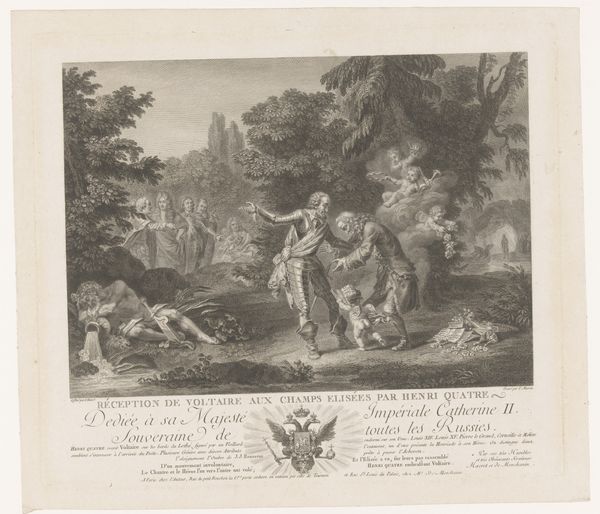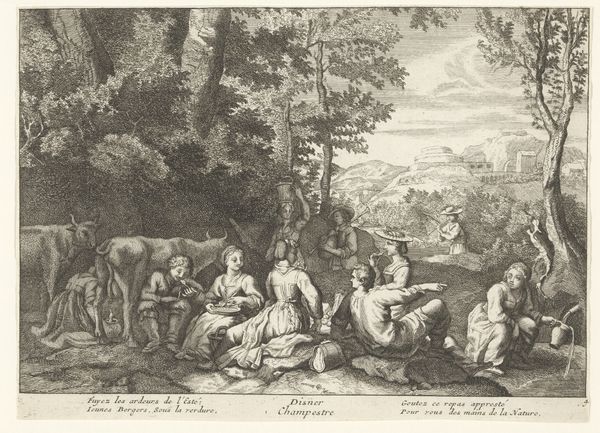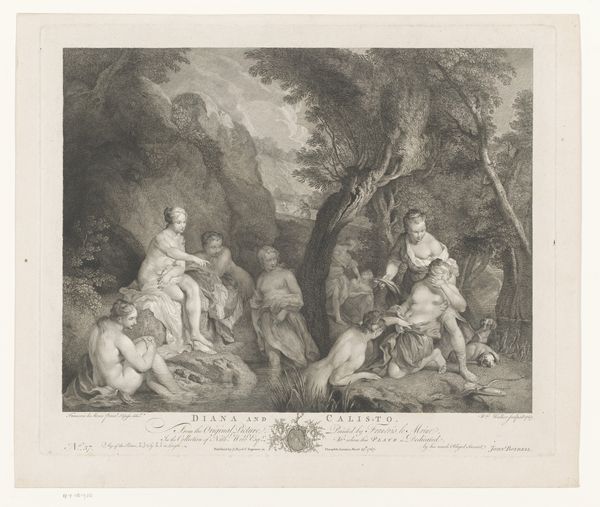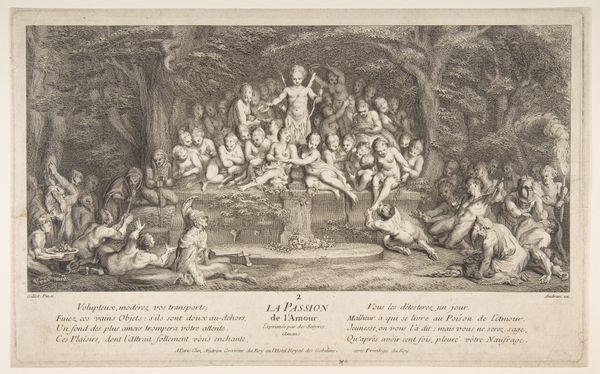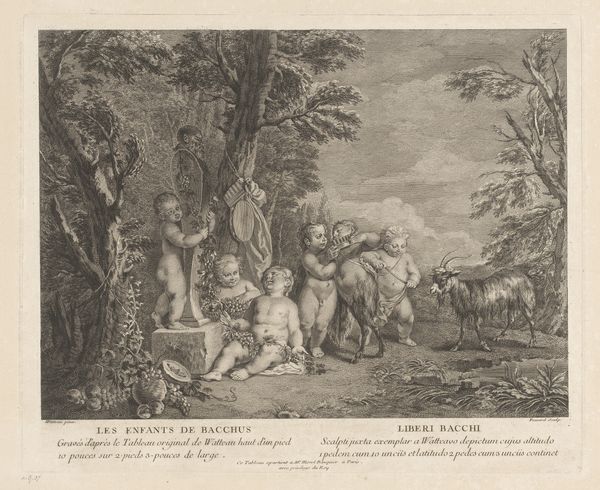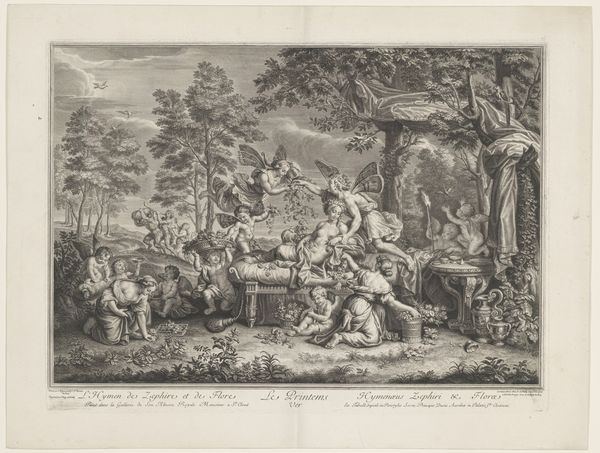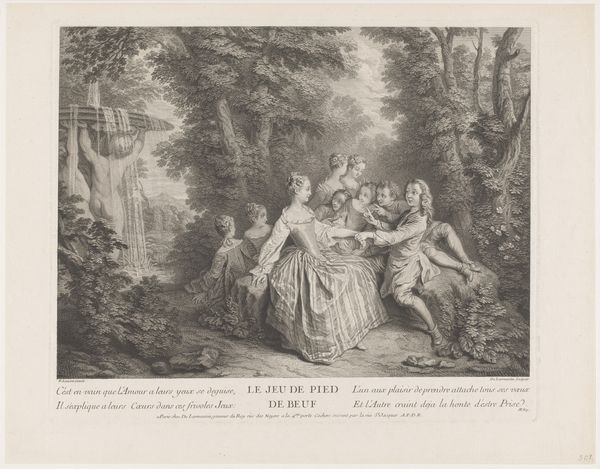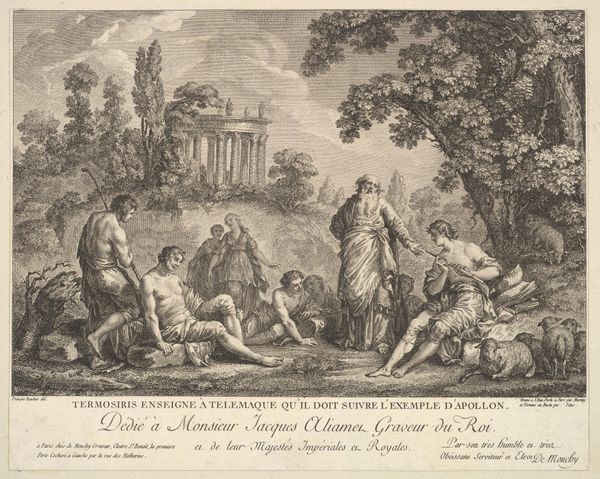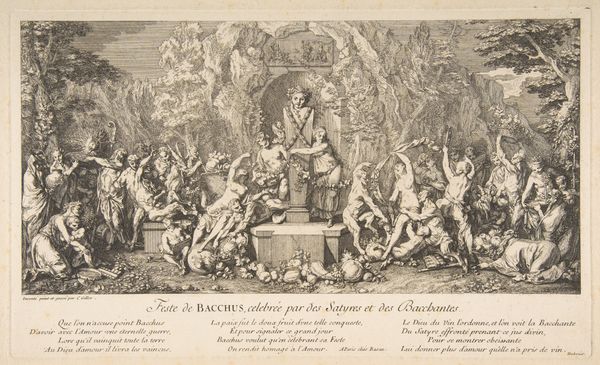
drawing, print, engraving
#
drawing
#
allegory
#
baroque
# print
#
landscape
#
figuration
#
history-painting
#
engraving
Dimensions: sheet: 10 5/16 x 16 5/16 in. (26.2 x 41.4 cm) image: 8 7/16 x 14 in. (21.5 x 35.5 cm)
Copyright: Public Domain
Curator: Welcome to this gallery highlight featuring "Feast of Diana," a print by Claude Gillot, dating from around 1685 to 1722. The work depicts Diana's feast being disrupted by satyrs in the forest. It's currently housed here at the Met. Editor: Wow, what a wonderfully chaotic scene! It reminds me of some bizarre bacchanal gone sideways. The nymphs look rather annoyed by the… unwelcome guests. The whole composition has a lively, theatrical energy, despite the delicate engraving. Curator: That chaos you pick up on, I believe, mirrors broader social anxieties of the time, around class and transgression. These are gendered transgressions as well—satyrs, representing unbridled male desire, intruding on the exclusive sphere of female communion, a scenario rich in symbolic implications of power and resistance. Editor: Hmm, "resistance." These nymphs seem to be more in the "get out!" camp than bravely resisting. Look at the faces. But it also kinda strikes me as... funny? Almost slapstick with those hairy satyrs. Maybe it's the anachronistic quality to our eye. Do we have context around comedic engraving like this at that point in history? Curator: Exactly! We can read Gillot’s baroque piece through the lens of contemporary gender theory. It is no longer merely an historical portrayal but an intersectional meditation. We can then use this text to question established notions concerning these transgressions throughout visual culture. This specific composition makes me want to reach back into older discussions on sexuality with Freud's works. Editor: I see where you're going, and I definitely think this composition sparks further inquiries and discussion about historical and current views. This could launch hours of conversation! For me, though, it's this artist's skill that keeps pulling me in; the linework is incredible and he made it so easy for us to want to talk. Curator: Precisely. These dialogues—across time and theory—are precisely what Gillot’s work inspires. Editor: It's a reminder that the stories art tells keep evolving and interweaving as we do. And those silly satyrs are now a little bit thought-provoking, thanks to Gillot's composition and our look at them.
Comments
No comments
Be the first to comment and join the conversation on the ultimate creative platform.
